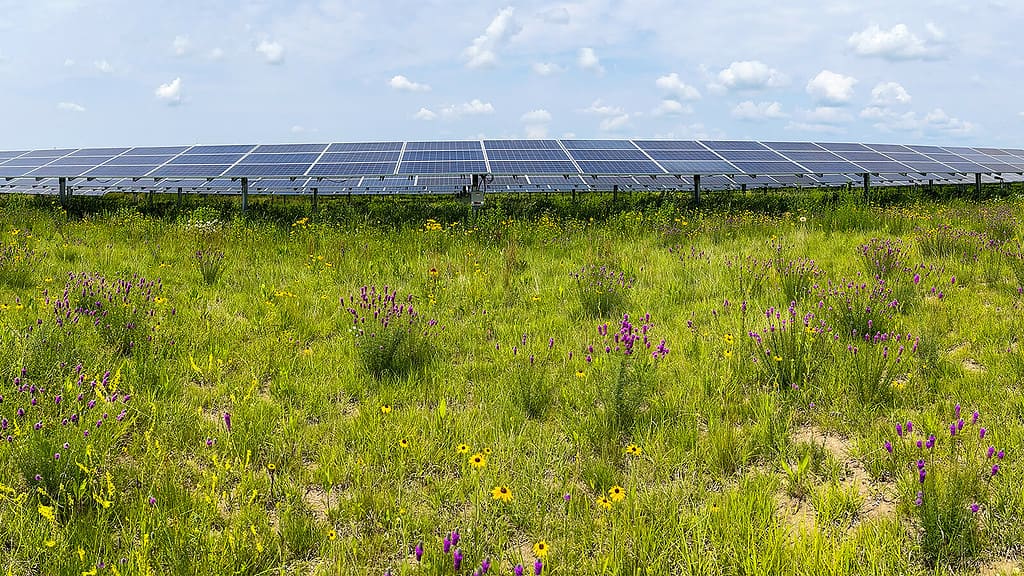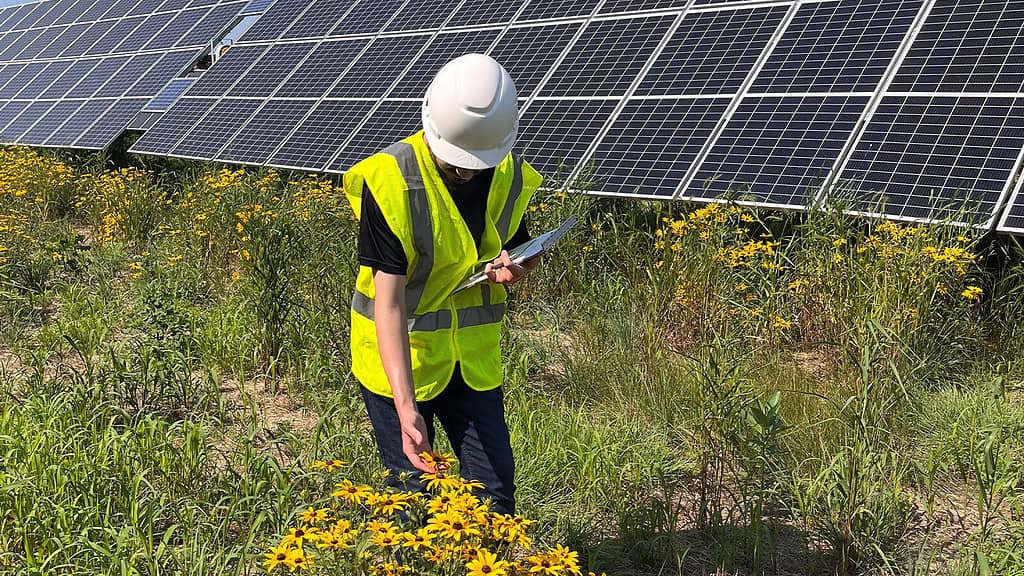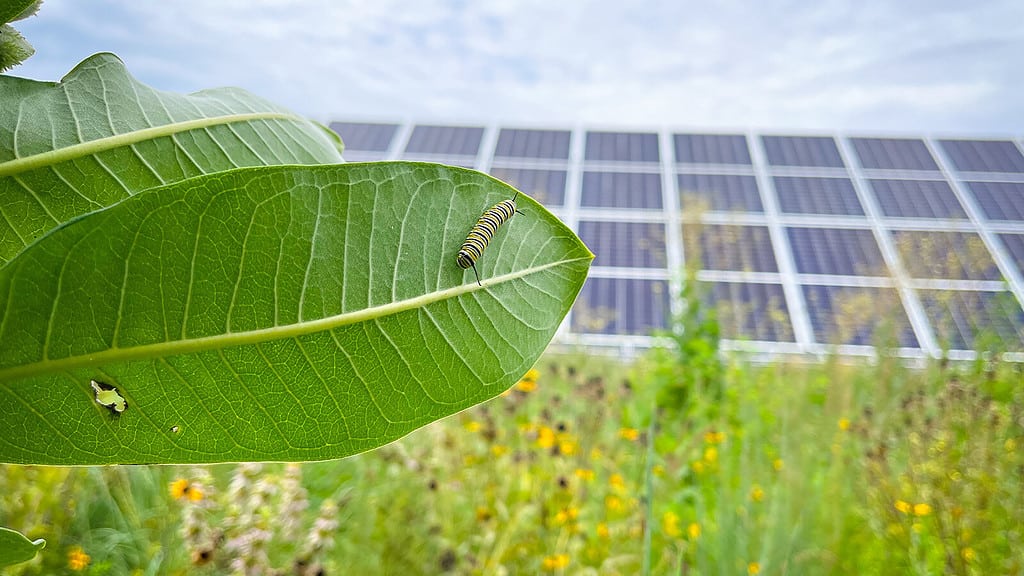Picture a solar panel field and you probably end up with a lot of black panels on brown soil. Maybe there’s a lot of concrete — definitely, there’s not too much vegetation. But what if we did things a bit differently and let nature take over?

Solar energy and wildflowers
At a photovoltaic (PV) solar array field on rehabilitated farmland, bumblebees are buzzing from flower to flower, while birds chirp around and tall, colorful plants blow in the breeze. This is the fruition of a project undertaken by researchers at the U.S. Department of Energy’s (DOE) Argonne National Laboratory and National Renewable Energy Laboratory. They wanted to see whether native vegetation alongside a PV field would encourage insect communities to respond and adapt.
Two solar sites were developed for this test in early 2018. Native grasses and flowers were planted in the area, in the hope that they would support the local ecosystem. They did.
From August 2018 to August 2022, researchers conducted 358 observational surveys, looking at the flowering plants and the insect communities, evaluating plant and insect abundance every time. There’s no automated way to do this at the moment, so it all took a lot of time and energy. But it was worth it.
“The effort to obtain these data was considerable, returning to each site four times per summer to record pollinator counts,” said Heidi Hartmann, manager of the Land Resources and Energy Policy Program in Argonne’s Environmental Sciences division, and one of the study’s co-authors. “Over time we saw the numbers and types of flowering plants increase as the habitat matured. Measuring the corresponding positive impact for pollinators was very gratifying.”

Build it and they will come
Overall, total insect abundance tripled over the course of the study, and native bee populations increased by 20 times. Other insects, like honeybees, wasps, hornets, moths, butterflies and beetles also thrived. As an added benefit, the pollinators also helped nearby agricultural fields.
“This research highlights the relatively rapid insect community responses to habitat restoration at solar energy sites. It demonstrates that, if properly sited, habitat-friendly solar energy can be a feasible way to safeguard insect populations and can improve the pollination services in adjacent agricultural fields.” Lee Walston, landscape ecologist and environmental scientist commented.
A much-needed boon for insects

Worldwide, insects are in trouble. Honeybee populations are notoriously in decline, but other species are dwindling as well. A part of that comes from our use of pesticides, but another part comes from our infrastructure development. So, increasingly, researchers are calling for infrastructure that also helps insects.
This is all the more important for solar panels. If current trends continue, we can expect large areas to be covered by solar panels, and most of that area is expected to be farmland. This research shows that habitat-friendly solar sites can play an important role in conserving biodiversity. Many agricultural fields are not that insect-friendly in the first place, and the solar panels/native plants combo could be a blessing for insects. In addition, this approach could offer benefits to neighboring agricultural fields by bringing in more pollinators, which should also be considered.
However, researchers note that more research is required to understand the feasibility of this approach across different regions. This is a promising test site that shows that, in some conditions, this can work. If the results can be replicated across other climates and regions, we could have a winning recipe on our hands.
The study was published in the journal Environmental Research Letters.









